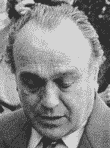| Year |
Month |
Day |
Location |
Persons |
Event |
| Volstead Act takes effect. Manufacture, transport, sale of alcohol are illegal – Jan. 16, 1920. |
| 1920 |
May |
11 |
Chicago, US |
Jim Colosimo,
Johnny Torrio,
Alphone Capone,
Frank Uale |
Colosimo is ambushed and killed in his restaurant. Underlings Torrio-Capone enter the bootleg alcohol business. Frank Uale is believed to have traveled to Chicago to perform the killing. |
| 1920 |
June |
|
New York, US |
Tommy Pennochio |
The bootleggers’ curbside Liquor Exchange is established along Kenmare, Broome, Grand and Elizabeth Streets, a short distance from police headquarters. Tommy Pennochio, an ally of Joe Masseria, supervises the exchange. Bootleggers can swap or sell their surpluses out in the open. One of the first significant inter-gang cooperative ventures of the Prohibition Era. |
| 1920 |
June |
30 |
United States |
Ignazio Lupo |
Harding Administration (Attorney General Harry Daugherty is credited with the decision) releases Lupo. The remaining 20 years of his counterfeiting sentence is conditionally commuted. Lupo swears off illegal endeavors and pledges to return to Sicily. “Murder Stable,” Lupo’s former headquarters, is reportedly torn down. |
| Nineteenth Amendment gives women the right to vote – Aug. 26, 1920. |
| 1920 |
|
|
Cleveland, US |
Nicola Gentile,
Umberto Valenti,
Toto D’Aquila |
Rum-running in Cleveland and Pittsburgh exhausts Gentile, and he drops out of sight for a while. New York ally and apparent successor to Lupo-Morello, Umberto Valenti, visits Gentile, concerned that an attempt has been made on his life. Gentile-Valenti decide to oppose New York boss of bosses Toto D’Aquila. Gentile travels to Sicily for rest and to begin organizing resistance to D’Aquila. |
| 1920 |
|
|
Cleveland, US |
Joe Lonardo,
Toto D’Aquila |
“Big Joe” Lonardo, leader of Cleveland Mafia group, allies with self-proclaimed boss of bosses Toto D’Aquila of New York. |
| 1920 |
|
|
New York, US |
Giuseppe Masseria,
Salvatore Mauro,
Umberto Valenti,
Ciro Terranova |
Masseria, 41, rises to prominence in the New York Mafia after his murder of Mauro, a rival bootlegger, on Chrystie Street. |
| 1920 |
|
|
Philadelphia |
Salvatore Sabella |
Sabella is engaged in business as an oil and cheese merchant and owner of a soft drink cafe. |
| 1921 |
Aug. |
|
New Jersey, US |
Stefano Magaddino,
Camillo Caizzo,
Frank Buccellato |
Magaddino and six others are arrested in connection with the murder of Camillo Caizzo, whose corpse was found in a large sack in New Jersey. The Caizzo murder was apparently a vendetta killing, as Caizzo and Frank Buccellato were believed to be responsible for the death of Magaddino’s brother Pietro five years earlier (in Castellammare del Golfo, Sicily). The Buccellato clan seemed to be forever feuding with the Magaddino-Bonanno-Bonventre family. Magaddino escapes prosecution. |
| 1921 |
Oct. |
30 |
New York, US |
Ignazio Lupo |
Attorney General Harry M. Daugherty gives permission for Ignazio Lupo to visit Sicily and return. Upon his return (probably early in 1922), Lupo is working in bakery business and operating a wholesale fruit operation with his son. |
| 1921 |
Nov. |
|
New York, US |
Carlo Gambino |
Arrives in New York. Goes to work for Castellano bootlegging family. Chandler says Gambino’s arrival date was Dec. 23. |
|
|
| 1922 |
May |
8 |
New York, US |
Joe Masseria,
Umberto Valenti,
Silva Tagliagamba |
Masseria, now known as “Joe the Boss,” acts immediately to avenge the death of Vincent Morello. He personally sets up an ambush for Valenti and his bodyguard Silva Tagliagamba at the curbside liquor exchange, where bootleggers meet openly to swap their surpluses. Valenti escapes unharmed, but Tagliagamba is mortally wounded. Masseria is apprehended while fleeing from the scene. Police surprised to find he has a gun permit. Masseria is charged with the Tagliagamba killing but the case is never prosecuted. |
| 1922 |
May |
|
New York, US |
Ignazio Lupo |
After a couple of years in Sicily, Lupo, claiming he is a wine merchant (during Prohibition?), tries to re-enter the U.S. Immigration officials attempt to deport him. He is held three weeks on Ellis Island as the case is processed. |
| 1922 |
June |
12 |
New York, US |
Ignazio Lupo |
Rather than deport him, the U.S. government orders that Lupo be readmitted. |
| 1922 |
|
|
New Orleans, US |
Carlo Matranga,
Sam Carolla |
Matranga decides to retire from New Orleans Mafia. The organization is left in the control of Sam Carolla. |
| 1922 |
Aug. |
8 |
New York, US |
Joe Masseria,
Umberto Valenti |
Masseria apparently ambushed outside of his home at 5th Street and 2nd Avenue. (Masseria’s home address at the time is #80 Second Avenue.) He ducks into Heiney’s Millinery and then ducks at least four bullets fired at close range, escaping unharmed but with bullet holes through a new straw hat. Umberto Valenti believed responsible for the attack. |
| 1922 |
Aug. |
11 |
New York, US |
Joe Masseria,
Umberto Valenti |
After attending what was supposed to have been a successful peace conference with Masseria men (Masseria said he would resign from his position as “boss”), Valenti was shot down in the street by Masseria forces. Chandler says Valenti’s murderer was Charlie Luciano, then a lieutenant under Masseria. The murder took place as Valenti was departing from a restaurant near #233 East 12th Street. |
| 1922 |
|
|
New York, US |
Tommy Pennochio |
The Pennochio-supervised Liquor Exchange in lower Manhattan closes down in fall. The exchange has been the site of much bloodshed. |
| 1922 |
|
|
New York, US |
Louis Buchalter |
Working with strikebreakers puts Buchalter in position to set up labor racketeering in city’s garment district. |
| 1923 |
|
|
Chicago (Cicero), US |
Al Capone |
Capone sets up headquarters at Hawthorne Inn, 4833 22nd Street in Cicero. |
| 1923 |
|
|
New York, US |
Frank Costello |
Costello’s home address is given as 234 East 108th St. |
| President Harding dies in office – Aug. 2, 1923. |
| 1923 |
Dec. |
2 |
Brooklyn |
Ignazio Lupo,
Anthony Forti |
Authorities note that Lupo conspired with Forti on a bakery extortion racket. |
| 1923 |
|
|
New York, US |
Owney Madden |
Prison stay ends as “The Killer” Madden is paroled. Madden becomes a top bootlegger and runs Harlem nightclubs. While he has no formal relationship with the Mafia, Madden cooperates with the organization. |
| 1924 |
|
|
Brooklyn |
Frank Uale |
Police report that 17 bullets were fired into Uale’s care as he returned home from a trip to Coney Island with friends. Uale was not injured. |
| 1924 |
Nov. |
|
Chicago |
Mike Merlo |
Chicago’s longtime Unione Siciliana leader Merlo dies of cancer. Funeral is attended by entire Chicago underworld and representatives of Sicilian communities across the country, including Uale from Brooklyn. |
| 1924 |
Nov. |
10 |
Chicago |
Dion O’Bannion |
O’Bannion is killed, apparently on orders of Al Capone. The actual killing is often attributed to Brooklyn gangster Frank Uale. It occurred in O’Bannion’s flower shop on North State Street. |
| 1924 |
Nov. |
24 |
Chicago |
Frank Uale,
Dion O’Bannion |
Authorities say they believe Uale was one of the killer’s of Chicago gang leader Dion O’Bannion. |
| 1924 |
Dec. |
|
New York |
Joe Bonanno |
Bonanno, 19, returns to Brooklyn. Initially settles down with his uncle, Peter Bonventre. |
| 1925 |
Jan. |
24 |
Chicago |
Johnny Torrio,
Alphonse Capone |
Torrio is shot at his home a short time before he was to begin a nine-month prison term in connection with the police raid on the Sieben Brewery (set up by North Side gangsters). During his hospital and prison stays, Torrio decides to retire. Capone takes over the gang. |
| 1925 |
May |
25 |
Chicago |
Angelo Genna |
Genna is killed in his car. (Capone responsible?) Samuel Amatuna takes over leadership of Unione Siciliana, still keeping its assets and prestige away from Capone. |
| 1925 |
|
|
Brooklyn |
Salvatore Maranzano |
Maranzano, 39 and already a Mafia hero in his homeland, arrives in Brooklyn from Sicily. Begins working in bootlegging and other rackets with the cohesive Castellammarese organization in Brooklyn. |
| 1925 |
Aug. |
|
Philadelphia, US |
Leo Lanzetti,
Salvatore Sabella |
Leo, oldest of the Lanzetti brothers, is shot by passing car of gunmen as he leaves his barber at Seventh and Bainbridge Streets. It is believed that the murder was Sabella’s way of countering incursions by the Lanzettis into Mafia territory. |
| 1925 |
Nov. |
10 |
Chicago |
Samuel Amatuna |
Amatuna is shot, dies three days later. (Capone again?) Capone uses his influence to install his ally and gang consigliere Antonio Lombardo as Unione president. |
|
| 1926 |
|
|
Chicago |
Antonio Lombardo |
Lombardo opens Unione membership to non-Sicilian Italians and changes the name of the group to the Italo-American National Union. |
| 1926 |
|
|
Brooklyn |
Frank Uale |
Probable attempt on Uale’s life. Police report that Uale’s chauffer is killed while driving Uale’s wife home from a wedding. |
| 1926 |
Oct. |
11 |
Chicago, US |
Earl “Hymie” Weiss,
Al Capone |
Capone believed responsible for death of North Side mobster Weiss. Weiss was shot by rifles as he passed by the old O’Bannion flower shop on North State Street. |
| 1927 |
May |
30 |
Philadelphia, US |
Salvatore Sabella,
Joseph and Anthony Zanghi,
Vincent Cocozza |
A rebellious wing of the Philadelphia Mafia is sent a clear message as Vincent Cocozza and Joseph Zanghi are shot dead on a street corner. Joseph’s brother Anthony leads police to accused killer Sabella. |
| 1927 |
Sept. |
|
Chicago |
Joe Aiello,
Alphonse Capone |
Aiello family allies with the North Side Gang against Capone. Aiellos may have had the support of Uale and the traditional Sicilians in the Mafia for this move. |
| 1927 |
Oct. |
13 |
Cleveland, US |
Joe Lonardo,
Joe Porrello |
Joe Porrello takes over Cleveland Mafia and leadership of local Unione Siciliana after having “Big Joe” Lonardo killed in Porrello Brothers’ barbershop. |
| 1927 |
|
|
Brooklyn |
Frank Uale |
Uale is believed to be hijacking his own liquor shipments to Capone, forcing the Chicago gangster to repeatedly pay for liquor that does not arrive. (Compensation for failure to pay dues payments.) Relationship between Uale and Capone becoming openly hostile. |
| 1927 |
|
|
New York, Philadelphia,
Atlantic City |
Salvatore Lucania (Luciano),
Meyer Lansky,
Frank Costello,
Benjamin Siegel,
Joe Adonis,
Abner Zwillman,
Nucky Johnson, Waxey Gordon,
Nig Rosen,
Johnny Torrio |
Allegedly under the guidance of Torrio, a number of Italian and Jewish bootleggers combine forces in the Seven Group. The organization quickly expands into Boston, Cleveland and Florida, providing a steady stream of quality liquor, a minimum of violence and a maximum of profits. |
| 1928 |
|
|
Chicago, US |
Al Capone |
Capone’s main office is now Room 430 of Hotel Lexington. |
| 1928 |
June |
|
Miami, FL, US |
Alphonse Capone,
Frank Uale |
Capone meets with some his top henchmen, including Charlie Fischetti, Jack Guzik and Dan Serritella, in Florida. The meeting may have been to set up a hit on Frank Uale. The Capone men appear to detour toward Brooklyn on their way back to Chicago. |
| 1928 |
July |
1 |
Brooklyn |
Frank Uale,
Alphonse Capone |
Uale is killed in his car. Tommy gun is found at the scene but appears not to have been responsible for the wounds to Uale’s body. Four men in a black sedan overtook Uale’s Lincoln and shot through the car’s side and rear window. Uale’s body, his skull crushed by bullets and buckshot, was found on the stone steps of 923 44th Street. |
| 1928 |
Sept. |
7 |
Chicago |
Antonio Lombardo |
Lombardo is killed. Pasqualino Lolordo takes over Chicago Unione. |
| 1928 |
Oct. |
15 |
New York, US |
Dutch Schultz,
Joey Noe,
Jack Diamond,
Arnold Rothstein |
Joey Noe, close business associate of Schultz, is shot in ambush on West 54th Street in front of Chateau Madrid. Clings to life for more than a month at Bellevue Hospital. Dies Nov. 21. Jack “Legs” Diamond is believed responsible for Noe’s death. Arnold Rothstein may have assisted Diamond. |
| 1928 |
Nov. |
4 |
New York |
Arnold Rothstein |
Shot and killed about 10 p.m. at servant’s entrance of the Park Central Hotel on Seventh Avenue. Famous as a gambler and loan shark, Rothstein was also believed to have been the force behind the 1919 Black Sox scandal and the early careers of Frank Costello, Charlie Luciano and Meyer Lansky. Police decide that Rothstein has been killed because of gambling debts. But the murder may also be the result of Dutch Schultz anger over a Rothstein role in Joey Noe’s killing. |
| 1928 |
Dec. |
5 |
Cleveland |
Joe Porrello |
Porrello, eager for national recognition, hosts a gathering of the U.S. Mafia in Cleveland. Porrello hopes to solidify his new position. Police are alerted to convention and 23 arrests of known Mafiosi are made. |
| 1928 |
Dec. |
8 |
New York, US |
Arnold Rothstein,
George McManus |
Gambler George McManus and his associate Hyman Biller are indicted for the murder of Rothstein. State cannot make charges stick. |
| 1929 |
Jan. |
8 |
Chicago |
Pasqualino Lolordo,
Giuseppe Guinta,
John Scalise,
Albert Anselmi |
Lolordo is murdered in his home. Capone rival Joseph Guinta takes over Unione and begins to draw some of Capone’s Sicilian supporters from him. John Scalise and Albert Anselmi, Capone enforcers and prominent figures in the Unione, secretly join Guinta faction. |
| 1929 |
Feb. |
14 |
Chicago |
Alphonse Capone |
Capone has much of the North Side mob murdered in what has become known as the St. Valentine’s Day Massacre. Four men – two in police uniforms – drove up in a police car to a stronghold of Bugs Moran, a garage at 2122 North Clark Street. Six Moran gangsters and one friend of Moran’s were lined up against a wall and shot to death by the four assailants. Moran had been returning to the building when he saw the police car and decided to beat it. Capone was relaxing (and establishing an alibi) near his Florida home at the time of the killings. |
| 1929 |
May |
7 |
Chicago |
Alphonse Capone,
John Scalise,
Albert Anselmi |
Capone invites the important members of his organization to a meeting/celebration at the Hawthorne Inn in Cicero, just outside Chicago. He then brutally beats and shoots to death Guinta, Scalise and Anselmi, the Sicilian defectors from his gang. His action puts an end to the Sicilian rebellion in his Chicago outfit but earns the disapproval of mob bosses in New York and elsewhere. |
| 1929 |
May |
17? |
Philadelphia |
Alphonse Capone |
Capone arrested on a weapons charge in Philadelphia. He does one year (actually serves just 10 months) of jail time. |
| 1929 |
|
|
Philadelphia, US |
Salvatore Sabella |
Sabella and nine of his men (probably including some who were hastily initiated into the Philly Mafia) move to New York to assist the Brooklyn Castellammarese clan in its fight against Joe Masseria. |
| 1929 |
May |
|
Chicago |
Joe Aiello,
Alphonse Capone |
With Capone temporarily out of the way, Joe Aiello steps to the presidency of the Chicago Unione. |
| 1929 |
Oct. |
17 |
New York |
Salvatore Lucania (Luciano) |
Luciano is taken “for a ride” but survives. He is permanently scarred on the face. He refuses to cooperate with police, indicating he will handle the matter himself. |
| Stock Market crash signals start of Great Depression – Oct. 29, 1929. |
| 1929 |
Dec. |
7 |
Bronx |
Ciro Terranova,
Albert Vitale |
A fundraiser dinner for magistrate Albert Vitale at Roman Gardens in the Bronx is crashed by several holdup men, who take jewelry, money and weapons from guards and one off-duty police officer. A few phone calls afterward, and all items are returned. Public is outraged at the number of underworld characters (including Terranova, who, according to some accounts, hosted the event) at the dinner and at Vitale’s connections to organized crime. Eventually, the press decides to accept a ludicrous explanation from the police that the holdup was staged by Terranova in order to rob one of his guests of incriminating evidence relating to the Uale murder. |
| 1929 |
Dec. |
27 |
Atlantic City |
Ciro Terranova |
Police/press eager to question Terranova about the Dec. 7 Vitale dinner learn that he left after Christmas to rest a few days in Atlantic City. He might be getting up to speed on the convention of May 13-16 and pledging himself to the reforms of the younger Mafiosi. Terranova appears to be more closely allied to Luciano than to Masseria after this point. |
|
|
| 1930 |
Jan. |
5 |
New York |
Ciro Terranova |
Terranova speaks with the press about the Vitale incident. Claims he is a scapegoat for a split in Tammany Hall. Tells reporters he is a “man of peace” and wishes to be let alone. |
| 1930 |
|
|
Chicago/New York |
Alphonse Capone,
Frank Uale |
Police link weapons from St. Valentine’s Day Massacre with those used in Uale murder. Implies that Capone was responsible for Uale’s death. |
| 1930 |
|
|
New York/Chicago |
Joe Masseria,
Joe Aiello,
Alphonse Capone,
Gaspar Milazzo,
Cola Schiro,
Stefano Magaddino,
Gaetano Reina |
Masseria attempts to broker a peace arrangement between Aiello and Capone. When Aiello resists and threatens Masseria, Joe the Boss approaches Gaspar Milazzo, leader of Detroit Mafia, in an effort to dissaude him from continuing to support Aiello. Milazzo won’t budge, and Joe the Boss begins to see the start of a Castellammarese conspiracy against his authority. The Castellammarese in Brooklyn (Cola Schiro’s group), Buffalo (Stefano Magaddino) and Detroit (Milazzo) appear to be backing Aiello in Chicago. The allegiance of Gaetano Reina in the Bronx is also in question at this time. |
| 1930 |
|
|
New York |
Joe Masseria,
Gaspar Milazzo,
Sasa Parrino |
Masseria believed responsible for death of Gaspar Milazzo, boss of Detroit Mafia and elder statesman among the Castellammarese in America. Milazzo aide Sasa Parrino is also killed in the attack. Joe the Boss installs Lemare atop Detroit group. Probably believes he is undermining Aiello by this action and also striking at the Castellammarese conspiracy. But he is undermining his own support by meddling in the internal affairs of Mafia “families.” |
| 1930 |
Jan. |
|
New York |
Joe Masseria,
Cola Schiro,
Joe Parrino |
Masseria demands $10,000 cash tribute from Schiro. Schiro pays and then vanishes. Masseria installs Joe Parrino, brother of recently deceased Sasa Parrino in Detroit, as head of Brooklyn Castellammarese family. |
| 1930 |
Feb. |
26 |
Bronx |
Gaetano Reina,
Joe Masseria,
Joe Pinzolo |
Reina, whose Bronx rackets include a monopoly on ice, is killed and replaced by Joe Pinzolo. Masseria believed responsible. Gaetano Gagliano and Gaetano Lucchese split off from Pinzolo and ally themselves with Maranzano. |
| 1930 |
March |
14 |
New York, US |
Albert Vitale |
The state apellate court decides to remove Magistrate Vitale from the bench. Vitale has reportedly deposited $100,000 in bank accounts while living beyond his means during five years as magistrate. He has also been linked to Ciro Terranova and other Mafia members as well as Arnold Rothstein, from whom he allegedly took a large “loan” before than gangster’s death. |
| 1930 |
March |
17 |
Chicago |
Alphonse Capone,
Joe Aiello |
Capone is released from Philadelphia prison and resumes warfare against Aiello. Capone supports Masseria in struggle against Castellammarese. |
| 1930 |
July |
|
Cleveland |
Joe Porrello |
Porrello, host of the raided 1928 Unione convention, is killed. |
| 1930 |
Aug. |
15 |
New York |
Salvatore Maranzano,
Giuseppe (Peter) Morello,
Giuseppe Piranio,
“Buster” |
Maranzano men gun down Morello, 60, at his offices, 362 E.116th Street. Piranio is also killed. Joe Valachi says “Buster” from Chicago was the gunman, indicates that Morello put up a fight even after being shot. |
| 1930 |
Sept. |
|
New York |
Joe Pinzolo,
Tommy Lucchese,
Gaetano Gagliano |
Maranzano allies from Reina’s old family eliminate Pinzolo in early September. Gagliano and Lucchese are believed to have cooperated on the hit, which occurred at a Lucchese office, 1487 Broadway. Bobby Doyle is believed to have pulled the trigger. |
| 1930 |
Sept. |
5 |
New York, US |
Gaetano Lucchese,
Joe Pinzolo |
Lucchese arrested and charged with murder of Pinzolo. Charges are later dropped. |
| 1930 |
|
|
Brooklyn |
Joe Parrino |
Joe Parrino is murdered by the Castellammarese. With the blessing of Stefano Magaddino of Buffalo (who has ruled the Brooklyn Castellammarese in absentia), Salvatore Maranzano becomes war leader of the group. |
| 1930 |
|
|
Detroit |
Lemare |
Detroit mob rids itself of Lemare. |
| 1930 |
Sept. |
23 |
Chicago |
Joe Aiello,
Alphonse Capone,
Agostino Loverdo |
Capone eliminates Aiello, sends financial support to Masseria in New York. Capone takes over what remains of the Unione by assigning Agostino Loverdo to be its president. Aiello is murdered by machine gun fire in front of a friend’s home at 205 Kolmar Avenue. |
| 1930 |
Oct. |
8 |
New York |
Ignazio Lupo |
Lupo believed responsible for murder of Roger Consiglio. |
| 1930 |
|
|
New York |
Salvatore Maranzano,
Salvatore Lucania (Luciano),
Vito Genovese,
Frank Costello,
Ciro Terranova |
Luciano, his associates and Terranova begin secret negotiations with Maranzano over betrayal of Masseria. |
| 1930 |
Nov. |
5 |
New York |
Salvatore Maranzano,
Al Mineo,
Steve Ferrigno,
Joe Masseria |
Maranzano scores another victory as his soldiers ambush and kill Al Mineo, powerful ally of Joe the Boss, and Steve Ferrigno, an important Mafia figure, oustide of Ferrigno’s home at 759 Pelham Parkway South. Masseria, who had met with the two men, lagged behind as Mineo and Ferrigno left the building and so escaped the ambush. |
| 1931 |
|
|
New York, US |
Joe Masseria,
Salvatore Maranzano,
Joe “Baker” Catania |
Masseria sends peace feelers to Maranzano. The Castellammarese say they will not end the war until Joe “the Baker” Catania, a firm Masseria and Terranova ally, is killed. |
| 1931 |
Feb |
3 |
New York, US |
Salvatore Maranzano,
Joe “Baker” Catania |
Catania, 29, is killed at 647 Crescent Avenue. Maranzano, who accused Catania of hijacking his liquor shipments, reportedly ordered the hit. |
| 1931 |
April |
15 |
Coney Island |
Joe Masseria,
Salvatore Lucania (Luciano),
Ciro Terranova,
Benjamin Siegel |
Luciano arranges for Masseria to be assassinated after a big lunch at Coney Island’s Nuova Villa Tammaro restaurant (also known as Scarpato’s Restaurant) while Luciano is in the bathroom. Terranova said to be the driver of the assassins’ car but too nervous to drive. Benjamin Siegel, believed to have been one of the shooters, reportedly shoved Terranova from the wheel and drove the car himself. |
| 1931 |
|
|
Northern New Jersey |
Salvatore Sabella |
Sabella is arrested for assault and battery with a motor vehicle. He receives a suspended sentence. Police discovered that his current address was the same as that used by Buffalo Mafia boss Stefano Magaddino after his 1921 arrest. (Just one of many threads that tie together the far-flung elements of the American Mafia.) |
| 1931 |
|
|
Chicago, US |
Salvatore Maranzano,
Nicola Gentile,
Al Capone,
Salvatore Lucania |
Despite Gentile’s urging for the establishment of a national Mafia commission, Maranzano proclaims himself boss of bosses at a meeting held in Chicago. The meeting also serves to patch up differences between Maranzano and his host, Al Capone. Luciano and his allies plan to eliminate Maranzano, as he begins working against them. |
| 1931 |
|
|
Philadelphia, US |
Salvatore Sabella,
John Avena |
Sabella retires as Philly mob boss, turning operations over to his handpicked successor John Avena. Sabella, now 40, remains active in Mafia affairs but no longer oversees day-to-day operations. |
| 1931 |
Sept. |
10 |
New York |
Salvatore Maranzano,
Salvatore Lucania (Luciano) |
Luciano arranges assassination of Maranzano in his Park Avenue suite of offices. Hit men arrive disguised as law enforcement officers. |
| 1931 |
Oct. |
6-16 |
Chicago |
Alphonse Capone |
Capone’s trial for income tax evasion. |
| 1931 |
Oct. |
24 |
Chicago |
Alphonse Caponse |
Capone sentenced to 11 years. |
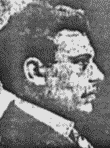 1904 – Santo Caressi (? to ?). Petto was murdered, apparently in retaliation for the barrel murder. Extortion victims and underworld rivals might also have had a hand in his death. At the time, Santo Caressi led a band of robbers and extortionists in Carbondale. Caressi was captured by a constable working with an anti-Mafia citizens’ group on Nov. 28, 1904. As he was taken into custody, the law enforcement group was attacked by Caressi men. Two members of the citizens’ group were shot and killed.
1904 – Santo Caressi (? to ?). Petto was murdered, apparently in retaliation for the barrel murder. Extortion victims and underworld rivals might also have had a hand in his death. At the time, Santo Caressi led a band of robbers and extortionists in Carbondale. Caressi was captured by a constable working with an anti-Mafia citizens’ group on Nov. 28, 1904. As he was taken into custody, the law enforcement group was attacked by Caressi men. Two members of the citizens’ group were shot and killed.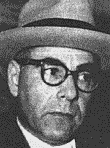
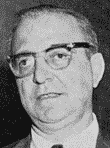
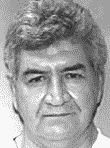


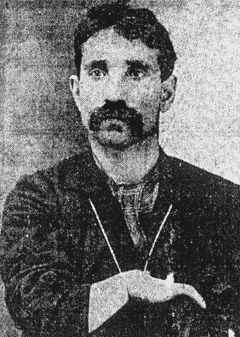
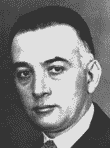
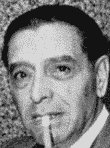
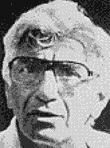 Profaci-Colombo family in New York. Henry Tameleo (July 12, 1901, to August 1985), who transferred into New England from New York City’s Bonanno family, served as his Providence underboss. In the mid-1960s, the Patriarca organizations put down underworld challenges from William Marfeo and Rocco DiSeglio. Gennaro Angiulo 1969 – Gennaro J. Angiulo (March 20, 1919, to Aug. 29, 2009). With Patriarca constantly hounded by authorities, Angiulo – who had worked gambling rackets as a mob affiliate during the 1950s and early 1960s – allegedly took a leadership role in the Boston wing of the New England family. While never a part of the Providence inner circle, he allegedly functioned as underboss in Boston through Patriarca’s death in 1984. 1984 – William Grasso (Jan. 6, 1927, to June 16, 1989). Patriarca died of a heart attack on July 7, 1984. Underboss Angiulo was reportedly not considered boss material.
Profaci-Colombo family in New York. Henry Tameleo (July 12, 1901, to August 1985), who transferred into New England from New York City’s Bonanno family, served as his Providence underboss. In the mid-1960s, the Patriarca organizations put down underworld challenges from William Marfeo and Rocco DiSeglio. Gennaro Angiulo 1969 – Gennaro J. Angiulo (March 20, 1919, to Aug. 29, 2009). With Patriarca constantly hounded by authorities, Angiulo – who had worked gambling rackets as a mob affiliate during the 1950s and early 1960s – allegedly took a leadership role in the Boston wing of the New England family. While never a part of the Providence inner circle, he allegedly functioned as underboss in Boston through Patriarca’s death in 1984. 1984 – William Grasso (Jan. 6, 1927, to June 16, 1989). Patriarca died of a heart attack on July 7, 1984. Underboss Angiulo was reportedly not considered boss material.